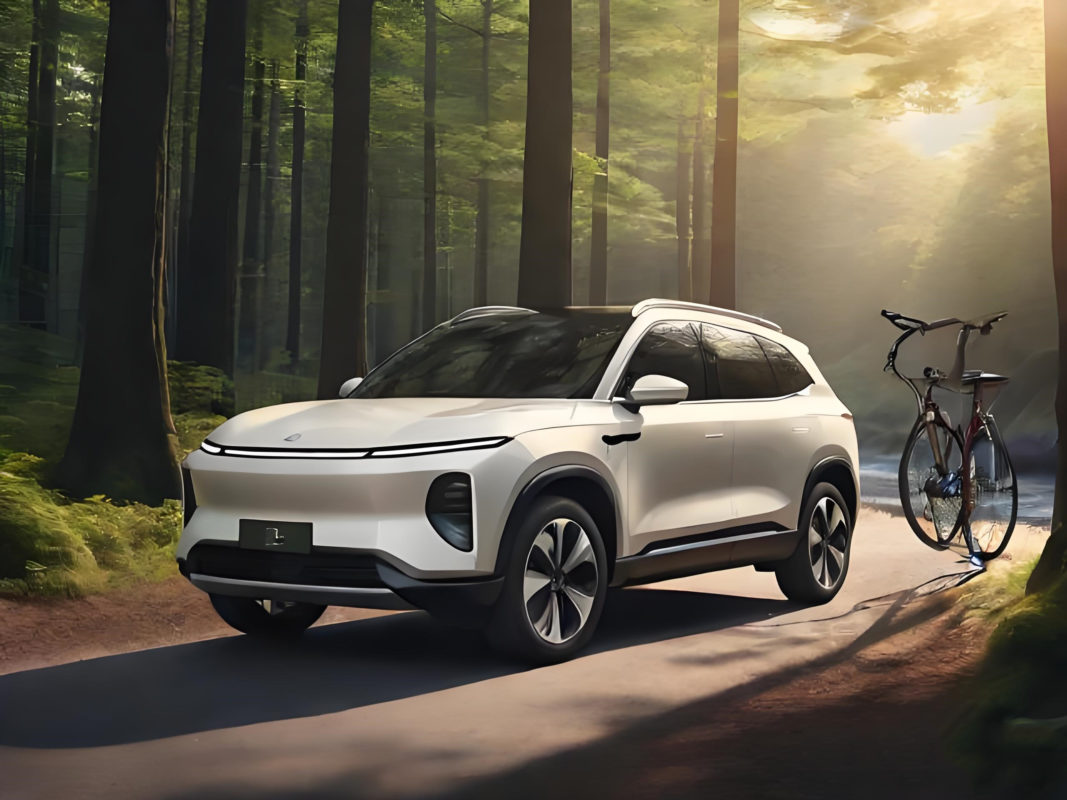1. The Rise of China’s Electric Vehicle Revolution
Over the last decade, China has rapidly emerged as the global leader in electric vehicle (EV) manufacturing, a transformation that has fundamentally altered the global automotive landscape. Once known for producing low-cost knockoffs of foreign car brands, Chinese automakers now lead in innovation, battery technology, and large-scale production. By 2024, China accounted for more than 60% of global EV production, and its domestic brands—like BYD, NIO, XPeng, and Wuling—are producing electric cars that are not only technologically competitive but also shockingly affordable.
To international observers, the low price of many Chinese EVs seems puzzling, especially when compared to their Western or Japanese counterparts. While an average new electric car in the United States or Europe can easily surpass $35,000, Chinese EVs can be found on the domestic market for under $10,000—with some ultra-compact city EVs like the Wuling Hongguang MINI EV selling for less than $5,000.
So how are Chinese electric cars so cheap? The answer is not the result of a single factor, but a complex combination of government support, vertical supply chains, aggressive market competition, and smart engineering choices, all backed by China’s massive manufacturing infrastructure.
2. Strong Government Subsidies and Strategic Policy Support
Perhaps the most significant driver of low-cost EV production in China is the country’s aggressive policy support. Since the early 2010s, the Chinese government has viewed the EV industry as a strategic pillar for reducing oil dependence, lowering urban pollution, and establishing global technological leadership.
Multi-Level Subsidies
The central government, along with provincial and municipal governments, has rolled out a multi-tiered subsidy system that reduces the retail cost of EVs significantly. These subsidies are not limited to consumers—manufacturers also receive financial incentives for meeting production quotas, advancing battery technology, or selling cars in underdeveloped regions.
In past years, subsidies were offered as high as ¥60,000 (around $9,000 USD) per vehicle, depending on the battery range and technology. Although some of these subsidies are now being phased out, their cumulative effect has already allowed Chinese automakers to scale up and optimize production costs over the last decade.
Infrastructure Investment
Moreover, the Chinese government has invested heavily in EV infrastructure, including public charging networks, battery-swapping stations, and localized manufacturing hubs. Cities like Shenzhen and Shanghai have implemented favorable registration policies for EVs, such as exempting them from license plate lotteries or road restrictions, thereby increasing consumer demand and supporting domestic sales volume.
3. Economies of Scale and Vertical Integration
One of the biggest reasons Chinese EVs are so inexpensive is due to the country’s unparalleled ability to manufacture at scale. China produces more cars annually than any other country in the world, and the sheer volume has enabled cost savings across every part of the EV supply chain.
Battery Production Dominance
China is the world’s largest battery manufacturer, with companies like CATL and BYD leading the market. These firms not only supply domestic automakers but also power Tesla’s Shanghai Gigafactory and other foreign brands operating in China. By controlling upstream resources like lithium, cobalt, and rare earth materials, and refining them domestically, Chinese EV companies reduce dependency on costly imports.
Fully Vertical Supply Chains
Many Chinese automakers, particularly BYD, adopt a vertically integrated approach, producing everything from battery cells and electric motors to software and electronic control systems in-house. This reduces reliance on external suppliers, lowers production costs, and improves overall coordination during the assembly process.
Moreover, this vertical integration allows for faster design iterations and better component compatibility, enabling companies to roll out new models in less time and with lower overhead costs, a key advantage in a highly competitive market.
4. Simplified Design and Minimalistic Engineering
While Western EVs often emphasize advanced autonomous features, luxury interiors, and complex infotainment systems, many Chinese electric vehicles prioritize affordability and urban utility over luxury or performance.
City EVs and Microcars
Low-cost models like the Wuling Hongguang MINI EV or Chery QQ Ice Cream are designed specifically for short-distance urban driving, typically offering a range of 100–200 kilometers and seating for two to four passengers. These vehicles often lack features such as airbags, traction control, or advanced driver assistance systems that are standard in the West, but this is intentional. Chinese consumers buying these cars understand their limitations and use them as second or third vehicles for inner-city commuting.
By focusing on essential functionality, Chinese EV makers cut down on development costs, reduce the weight of the vehicles (which, in turn, improves energy efficiency), and offer a product that fulfills the core need of mobility without unnecessary frills.
5. Aggressive Market Competition and Price Wars
The intense competition in China’s domestic EV market plays a crucial role in driving prices down. In 2024, more than 100 Chinese companies are actively producing electric vehicles, ranging from state-owned giants to nimble startups. This hyper-competitive environment has led to frequent price wars, where manufacturers slash margins to gain market share or eliminate weaker competitors.
Disruptive Strategies by Startups
Companies like Neta, Leapmotor, and AITO have adopted disruptive go-to-market strategies, offering below-market pricing in exchange for rapid customer acquisition. These companies frequently operate at a loss in their initial years, backed by venture capital or local government support, with the goal of achieving scale before turning a profit.
Even larger players like BYD and XPeng are not immune to these pricing battles. BYD, for instance, often launches new models at staggeringly low price points to outcompete Tesla in the mid-range segment, despite offering comparable specs.
This cutthroat competition pushes every manufacturer to innovate faster, reduce costs, and seek efficiency at every stage, benefiting the consumer with lower retail prices.
6. Access to Local Resources and Low Labor Costs
Beyond policy and market competition, China’s advantage lies in its access to vast raw material reserves and a highly skilled, cost-effective labor force. Many of the essential components used in EV manufacturing—lithium for batteries, rare earth magnets for motors, copper for wiring—are either mined domestically or sourced through long-term partnerships with resource-rich countries.
Lower Labor Costs, Higher Productivity
China’s manufacturing labor remains significantly cheaper than that in Europe, North America, or Japan, despite the rise in wages over the last decade. More importantly, Chinese factories are among the most automated and efficient in the world, integrating AI-based assembly systems, precision robotics, and lean supply chain models that further reduce production time and waste.
By maintaining this blend of low-cost human labor and cutting-edge automation, Chinese EV makers achieve a productivity-to-cost ratio that few global competitors can match.
7. Domestic Demand and Global Expansion Strategy
Another often overlooked factor behind the affordability of Chinese electric vehicles is the sheer size of the domestic market. With over 1.4 billion people, China offers a vast pool of urban consumers seeking affordable transport solutions, particularly in tier-2 and tier-3 cities where disposable income may be limited, but mobility needs are just as high.
Volume as a Business Model
Unlike Western brands that rely on high-margin models, many Chinese automakers pursue a volume-based strategy—earning small profits per unit while achieving financial sustainability through massive sales figures. This allows them to offer extremely low prices without compromising viability.
Export-Driven Scaling
Chinese EV makers are increasingly looking beyond their domestic borders. In recent years, brands like BYD, NIO, and MG (now Chinese-owned) have made inroads into Europe, Southeast Asia, and Latin America, introducing competitively priced electric cars that challenge both price and performance norms in their target markets.
To prepare for export, many manufacturers build cars to international safety and emissions standards from the outset, enabling them to spread development costs across both domestic and foreign sales.
By leveraging domestic success and global expansion ambitions, Chinese EV companies are able to keep per-unit costs low, further fueling their ability to offer cheaper models.
In today’s global car market, Chinese electric vehicles represent a compelling mix of affordability, innovation, and scalable efficiency, driven by a unique confluence of government support, manufacturing strength, and market dynamics. As the world transitions toward cleaner transportation solutions, China’s approach to low-cost EV production is reshaping consumer expectations and compelling other nations to rethink their strategies in the electrified era.

